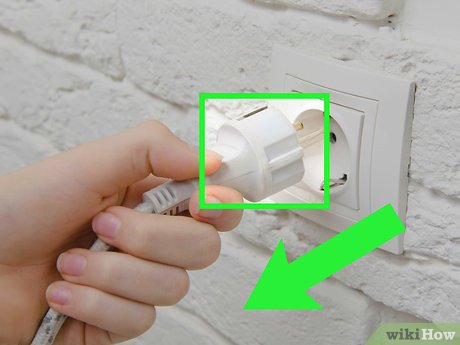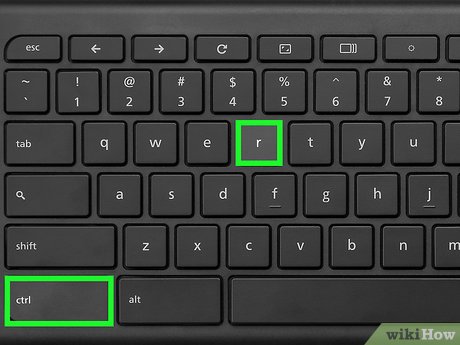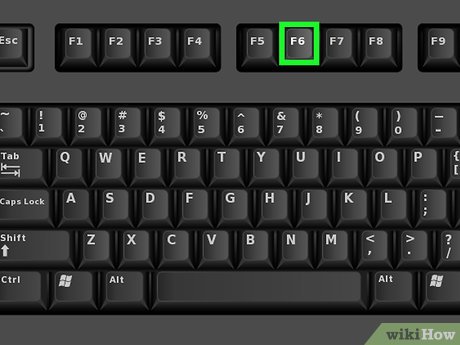How to Configure RAID
Method 1 of 2:
Selecting the RAID
-
 Decide what type of RAID you want. There are a variety of RAID levels, each offering its own type of protection and security.
Decide what type of RAID you want. There are a variety of RAID levels, each offering its own type of protection and security.- RAID 0 improves hard drive performance by splitting data over multiple hard drives, but offers no data protection.
- RAID 1 writes the same data to multiple hard drives, protecting data against a hard drive failure.
- RAID 5 offers improved performance and protection, but requires at least three hard drives.
- Research the different types to find the one that best suits your needs.
Method 2 of 2:
Installation
-
 Keep in mind when you are handling the inner parts of any computer or its components make sure the power source is turned off and unplugged. Also, make sure you have yourself grounded to prevent damage from static electricity.
Keep in mind when you are handling the inner parts of any computer or its components make sure the power source is turned off and unplugged. Also, make sure you have yourself grounded to prevent damage from static electricity.- Making sure that the computer has been shut off and unplugged will prevent accidental damage to the computer parts as well as accidental injury to the user.
- Grounding yourself will prevent accidental shock damage generated by static electricity.
- When handling any electrical computer component, don't touch any of the metallic chips or circuitry. The oils on your hands and fingers can and will damage the parts from working correctly.
-
 Install the RAID adapter in your PC. Install the adapter in an available PCI or PCI Express slot. You will need to consult the instructions in both your RAID adapter manual and your motherboard manual, as the directions will vary depending on the individual models involved. If your motherboard already came with RAID, then you can just skip this test.
Install the RAID adapter in your PC. Install the adapter in an available PCI or PCI Express slot. You will need to consult the instructions in both your RAID adapter manual and your motherboard manual, as the directions will vary depending on the individual models involved. If your motherboard already came with RAID, then you can just skip this test.- You must set the controller mode to RAID. This is done in the system bios. During the start up of your system, a specific keystroke will bring you to this screen.
-
 Configure the RAID adapter in your BIOS. During your PC's boot up sequence, press the key combination to bring up the configuration panel for your RAID adapter. You will find this information in the adapter's manual. Typically, the combination is either Ctrl+R or Ctrl+A.
Configure the RAID adapter in your BIOS. During your PC's boot up sequence, press the key combination to bring up the configuration panel for your RAID adapter. You will find this information in the adapter's manual. Typically, the combination is either Ctrl+R or Ctrl+A.- In some cases, depending on your computer hardware setup, you may be asked to run your computer's CMOS setup program in order to set up your hard drives for RAID.
-
 Partition and format the array. Install the adapter in your operating system. During the boot-up sequence of your computer, keep your eyes open for any messages prompting you to install a third-party SCSI or RAID driver. If you see it, then you will need to press F6 to initiate the installation process. In this case, you will be prompted to insert the floppy disk that came with your adapter, as this disk holds all of the third-party drivers.
Partition and format the array. Install the adapter in your operating system. During the boot-up sequence of your computer, keep your eyes open for any messages prompting you to install a third-party SCSI or RAID driver. If you see it, then you will need to press F6 to initiate the installation process. In this case, you will be prompted to insert the floppy disk that came with your adapter, as this disk holds all of the third-party drivers.
4 ★ | 1 Vote
You should read it
- How to Disable RAID
- 10 things you need to know about Raid in Minecraft
- What is raid? Common types of RAID compare their similarities and differences
- Building backup disk system (RAID)
- How to switch from RAID to AHCI without reinstalling Windows 10
- Methods to expand storage memory for computers quickly
- How to fix the error of not seeing network adapter on Windows 10
- How to fix the black screen of the Raid game
May be interested
- Secedit: configure command in Windows
 secedit: configure command allows you to configure the current system settings using the security settings stored in the database.
secedit: configure command allows you to configure the current system settings using the security settings stored in the database. - Configure 2020 Pes PC
 pes 2020 configuration is considered lower than the games that will be released in the same year as doom eternal, half life alyx, cyberpunk 2077 ...
pes 2020 configuration is considered lower than the games that will be released in the same year as doom eternal, half life alyx, cyberpunk 2077 ... - Configure GTA Trilogy on PC
 configuring gta trilogy on pc will require a level of configuration far from what the originals required.
configuring gta trilogy on pc will require a level of configuration far from what the originals required. - How to Configure Firewall on Debian Using UFW
 ufw provides a user-friendly way to control incoming and outgoing traffic, strengthening your system's defenses against unauthorized access and potential threats.
ufw provides a user-friendly way to control incoming and outgoing traffic, strengthening your system's defenses against unauthorized access and potential threats. - Configuring play Layer Of Fear on computer
 you can choose to configure it to a high or low graphics level to experience the layer of fear 2 in this article.
you can choose to configure it to a high or low graphics level to experience the layer of fear 2 in this article. - Unsolved mysteries in World War 2
 among them are the difficult mysteries from world war ii such as strange flying objects in the los angeles air raid, the mysterious disappearance of the ghost train full of wealth of the nazis .. .
among them are the difficult mysteries from world war ii such as strange flying objects in the los angeles air raid, the mysterious disappearance of the ghost train full of wealth of the nazis .. . - How to Configure a Router
 the router is an important device in the home network. if you configure your router properly, you can keep your information secure from snoopers, securely connect every device in your home to the internet, and even keep your children from seeing things they shouldn't. see. follow the steps in this article to configure your router in just a few minutes.
the router is an important device in the home network. if you configure your router properly, you can keep your information secure from snoopers, securely connect every device in your home to the internet, and even keep your children from seeing things they shouldn't. see. follow the steps in this article to configure your router in just a few minutes. - Configure IP network address with MS-DOS command
 usually to configure and set the ip address for machines in the network you just need to configure in network connections and set the ip address in the tcp / ip protocol with the windows interface. now we introduce a method to configure the ip address using the command line command sometimes this way will be used in necessary cases.
usually to configure and set the ip address for machines in the network you just need to configure in network connections and set the ip address in the tcp / ip protocol with the windows interface. now we introduce a method to configure the ip address using the command line command sometimes this way will be used in necessary cases. - Instructions for configuring IPv6 on Windows Server
 assigning addresses on an ipv6 network is a bit different from ipv4. ipv6 can be assigned to an interface in four ways in how to configure this ipv6.
assigning addresses on an ipv6 network is a bit different from ipv4. ipv6 can be assigned to an interface in four ways in how to configure this ipv6. - The Scwcmd configure command in Windows
 applies to: windows server 2012 r2, windows server 2012.
applies to: windows server 2012 r2, windows server 2012.












 How to Format a Floppy Disk
How to Format a Floppy Disk How to Connect a USB Printer to a Network
How to Connect a USB Printer to a Network How to Identify if Your Phone Is an Original or a Clone
How to Identify if Your Phone Is an Original or a Clone How to Use an SD Memory Card
How to Use an SD Memory Card How to Install a Modem
How to Install a Modem How to Maintain Your Computer
How to Maintain Your Computer